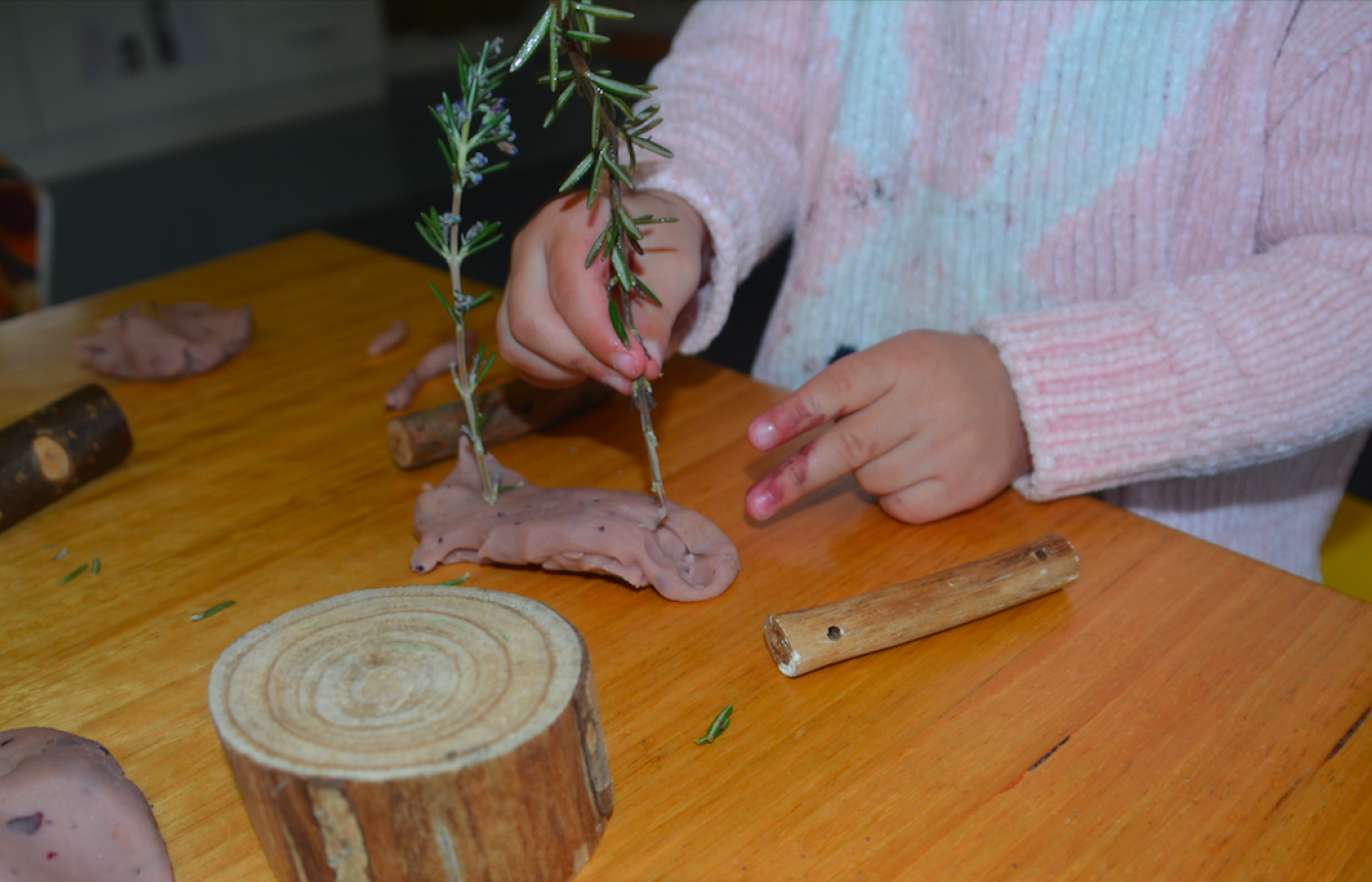Sensory playdough

Sensory playdough
Homemade playdough mixed with a variety of spices
Materials Required
- 2 cups plain flour
- 2 tablespoons cooking oil (coconut oil works too)
- 1/2 cup salt
- 2 tablespoons cream of tartar
- 1 to 1.5 cups hot water (adding in small amounts until you are happy with the consistency)
- Gel food colouring (optional)
- Aromatic Spices - curry powder, cinnamon, cloves, paprika, nutmeg, garlic or ginger.
Utensils
Play experience profile
-
Ages:
-
Min Playtime30 - 45 Minutes
-
Skills
-
Energy LevelIndependent Play
-
Messiness Rating
-
EYLF Outcomes
Play Experience Preparation
Involve your child in gathering and measuring the materialsExperience Steps
- Mix the flour, salt, cream of tartar and oil in a large mixing bowl
- Divide into three or four smaller bowls and add one spice to each one, to make the dough strongly scented.
- Add ¼ cup of water (add food colouring to the water) to each bowl and stir continuously until it becomes a sticky, combined dough
- Take the mixture out of each bowl and knead it until all of the stickiness has gone. The kneading is the most important part of the process, so keep at it until it’s the perfect consistency! If it remains a little sticky, add a touch more flour until just right

What to talk about, or questions to ask during the experience
- Do you think it smells sweet or savoury?
- Does this smell like something we eat?
- What does this playdough smell like?
- What country do you think this comes from?
Build on this...
- Look for natural herbs and materials from your garden to add to the play
- Explore the herbs and spices at the supermarket
WHO guidelines for physical activity and sedentary behaviour
Provide evidence-based public health recommendations for children, adolescents and adults on physical activity.
Learn more
Provide evidence-based public health recommendations for children, adolescents and adults on physical activity. Learn more
Following this activity you may like to use the playdough to create an imaginative kitchen or café restaurant to practice both creative and physical skills
EYLF Outcomes
The Early Years Learning Framework has been designed for use by early childhood educators working in partnership with families, children’s first and most influential educators.
View PDF
The Early Years Learning Framework has been designed for use by early childhood educators working in partnership with families, children’s first and most influential educators. View PDF
- Children feel safe, secure, and supported
- Children respond to diversity with respect
- Children become strong in their social and emotional wellbeing
EYLF Principle
Principle 4: Respect for diversity. Children are born belonging to a culture, which is not only influenced by traditional practices, heritage and ancestral knowledge, but also by the experiences, values and beliefs of individual families and communities. Respecting diversity means within the curriculum valuing and reflecting the practices, values and beliefs of families.
EYLF Practice
Practice: Cultural competence. Cultural competence is much more than awareness of cultural differences. It is the ability to understand, communicate with, and effectively interact with people across cultures.
Author:


